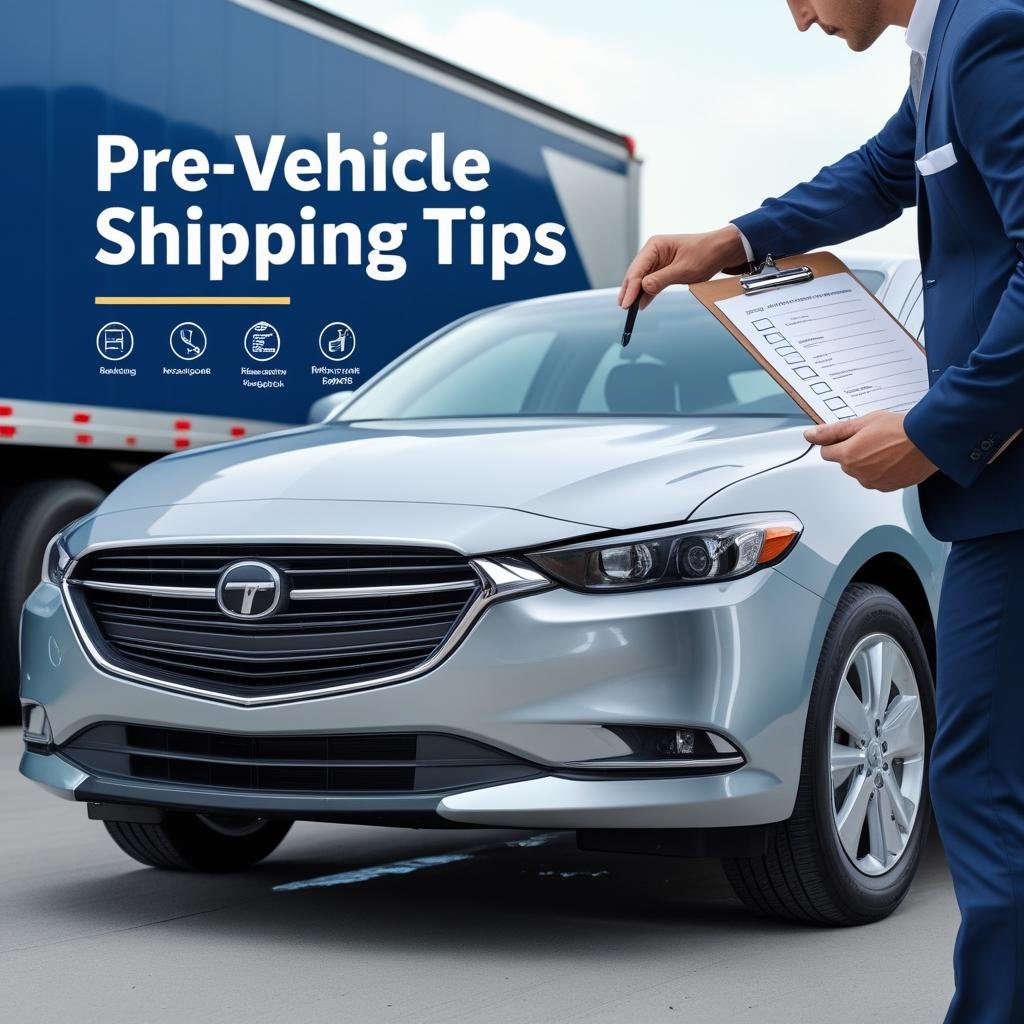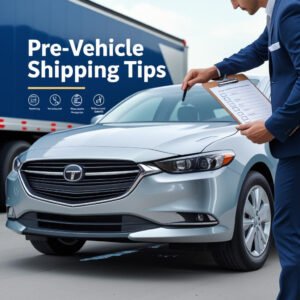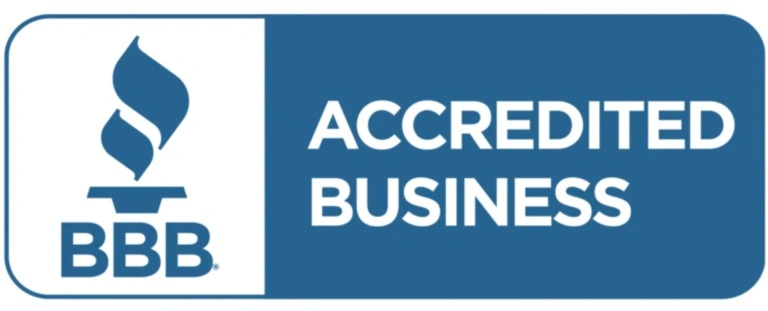How to Prepare Your Car for Auto Shipping: Proven Checklist
Are you sure your vehicle is ready to be shipped? Give it a second thought and follow a proper preparation checklist to make the process hassle-free. Wash your car thoroughly from outside and inside, remove your personal belongings, check the fluid tank, and inspect it in depth for damage. Although professional car shipping companies do the job quite well, you should prepare your car for shipping on your own. You can get enough time for any possible repairs and experience a smooth transition from state to state.
Are costly delays, insurance disputes, and documentation getting on your nerves? Book your delivery with best auto transport Company as AWZ Auto Transport, a trusted name for reliable car shipping services in the United State. Their professional team helps you prepare your vehicle for shipping. Get a free quote now to experience comfort like never before.
Steps to Prepare Your Car For Auto Transport
Auto transport preparation involves mechanical checks, documentation, and safety requirements that protect both your vehicle and the carrier’s equipment. Vehicle carriers operate under strict DOT regulations and can refuse vehicles that don’t meet transport standards. Your car will travel 1,000+ miles on a multi-level trailer with 8-10 other vehicles, so every detail matters for safe transport.
A prior vehicle check helps ensure smooth delivery coast to coast during loading, transport, or delivery. Follow this checklist to avoid conflicts with the carrier.
Wash Your Vehicle Properly
Clean your car completely before the carrier inspection to reveal every scratch, dent, and paint imperfection. Dirt and road grime hide existing damage that could later be blamed on the transport company. Use a pressure washer or car wash to remove all surface dirt, paying special attention to the lower panels where road damage typically occurs.
Dry your vehicle thoroughly and inspect it in bright sunlight or good lighting. The carrier driver will document every visible defect during pickup, so you need a spotless surface to ensure accurate damage assessment. Clean windows also help during loading since drivers need clear visibility when positioning your car on the trailer.
Take Pictures of Your Vehicle
Photograph your entire vehicle from multiple angles using a smartphone or digital camera with timestamp enabled. Take close-up shots of any existing damage like scratches, dents, paint chips, or rust spots. Include photos of all four corners, both sides, front, rear, roof, and interior if there are any notable issues.
Focus on areas prone to transport damage: bumpers, mirrors, door handles, and lower body panels. Take pictures of your license plates, VIN number visible through the windshield, and odometer reading. Store these photos in cloud storage or email them to yourself since you’ll need them for comparison when your car arrives.
Remove Personal Items From Your Vehicle
Almost all car transport companies don’t cover personal possessions. Remove electronics, chargers, sunglasses, documents, spare change, air fresheners, phone mounts, and anything costly and unnecessary.
Check all storage compartments, including glove box, center console, door pockets, seat back pockets, and trunk. Even small items like pens or coins can become projectiles during transport and crack your dashboard or scratch surfaces. Some carriers allow up to 100 pounds in the trunk, but most prefer completely empty vehicles.
Did You Know? You can avoid additional costs and weights during your auto transport by removing your essentials. If you are intentionally shipping something, get a personalized quote accordingly.



Check for Fluid Leaks
Inspect your vehicle for fluid drips or stains that indicate leaks from engine oil, transmission fluid, brake fluid, coolant, or power steering systems. Even minor leaks can cause problems since your car might be placed on the upper deck of a two-level trailer, potentially dripping onto vehicles below.
Look for fresh stains on your garage floor or parking spot where your car normally sits. Check the engine bay for signs of fluid on components or visible wet spots. If you discover leaks, get them repaired before pickup or inform the driver so they can position your car on the trailer’s lower level.
Maintain Proper Fuel Level
Keep your fuel tank between 1/8 and 1/4 full to provide enough gas for loading and unloading while minimizing weight. Transport trailers have strict weight limits, and a full gas tank adds 100+ pounds that could cause the carrier to exceed legal weight restrictions.
Your car won’t be driven during transport, so additional fuel is unnecessary and costly. Most pickup locations and delivery destinations have gas stations nearby if you need to refuel after delivery. Never transport a vehicle with a completely empty tank since it needs to start and drive onto the trailer.
Check Battery and Tires
Make sure your car battery is fully charged and won’t move around in its holder. The driver has to start the car several times to get it on and off the truck, so a dead battery will cause delays and could be dangerous.
Check your tire pressure using the sticker on your driver’s door or your owner’s manual. Tires that are too flat can get damaged when loading, and tires with too much air won’t grip the ramps well. Also, look for any cuts, bulges, or bad wear on your tires that might cause trouble.
Take off Accessories
Take off any removable accessories that could be damaged during transport or interfere with trailer clearances. This includes bike racks, ski racks, roof cargo boxes, custom spoilers, and aftermarket antennas. These items can be torn off by low bridges or damaged during loading.
Fold in side mirrors if they’re manually adjustable and retract power antennas. Remove any temporary items like parking permits, toll transponders, or suction cup devices from windows. Secure or remove custom license plate frames that might not be firmly attached.
Disable Car Alarms
Turn off your vehicle’s alarm system to prevent it from activating during transport due to trailer movement and vibration. Car alarms that sound during transport create safety hazards for the driver and can result in your vehicle being offloaded until the alarm is disabled.
Test your alarm system before pickup to ensure it’s properly deactivated. If you’re unsure how to disable it, consult your owner’s manual or contact your dealer. Some vehicles have multiple alarm settings, so verify that both the factory alarm and any aftermarket security systems are turned off.
Remove Toll Tags
Take out your toll transponders before shipping to avoid getting hit with surprise charges. Your E-ZPass, SunPass, or FasTrak will automatically trigger whenever your car goes through toll booths – even when it’s sitting on a transport truck. You could end up with dozens of toll fees for a trip you didn’t even take.
If your transponder sticks to the windshield or clips to your visor, just pull it off and tuck it away somewhere safe. For the ones that are permanently installed in your car, you’ll need to call your toll company and ask them to temporarily pause your account. Some people also put aluminum foil over the device to block the signal, but calling to suspend it is more reliable.
Prepare Spare Keys
Create a complete set of spare keys for the transport driver, including ignition, door locks, and any special keys for locking gas caps or wheel locks. Never give the driver your only set of keys since you’ll need them when your car is delivered, and emergencies can occur during transport.
Test all keys before the pickup appointment to ensure they work properly. Some older vehicles require separate keys for different functions, and high-end cars may have special procedures for keyless entry systems. Write down any special instructions for starting your vehicle or accessing locked features.







How to Protect a Car During Shipping?
Prepare your car and get it checked for any physical or mechanical damage. Auto transport companies offer open and enclosed shipping options. In closed carriers, your car travels in a fully protected carrier. But all this is in vain if you have not properly prepared your car for shipment. Fuel leaks, battery issues, and other damages expose your vehicle to additional stress, so put in an effort to keep it safe.
Conclusion
Almost 90% of the car transport delays occur due to the lack of self-inspection and preparation of your vehicle for delivery. Take ownership of your car and ensure it is in a neat and clean condition for auto transport. Whether you go for open or enclosed shipping, check your car physically and mechanically, like the fuel tank, damage, etc. Start preparation 48 hours before your scheduled pickup date to avoid rushing through important steps. Carriers handle dozens of vehicles weekly and can immediately identify cars that aren’t properly prepared, resulting in pickup delays or additional fees. So, don’t miss your scheduled car shipping due to your own negligence.












